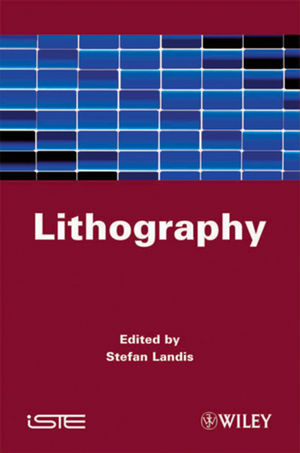LithographyISBN: 978-1-84821-202-2
Hardcover
320 pages
December 2010, Wiley-ISTE
 |
||||||
Foreword xi
Jörge DE SOUSA NORONHA
Introduction xvii
Michel BRILLOUËT
Chapter 1. Photolithography 1
Philippe BANDELIER, Anne-Laure CHARLEY and Alexandre
LAGRANGE
1.1. Introduction 1
1.2. Principles and technology of scanners 3
1.3. Lithography processes 8
1.4. Immersion photolithography 12
1.5. Image formation 25
1.6. Lithography performances enhancement techniques 27
1.7. Contrast 31
1.8. Bibliography 38
Chapter 2. Extreme Ultraviolet Lithography 41
Maxime BESACIER, Christophe CONSTANCIAS and Jean-Yves
ROBIC
2.1. Introduction to extreme ultraviolet lithography 41
2.2. The electromagnetic properties of materials and the complex index 46
2.3. Reflective optical elements for EUV lithography 61
2.4. Reflective masks for EUV lithography 72
2.5. Modeling and simulation for EUV lithography 79
2.6. EUV lithography sources 90
2.7. Conclusion 95
2.8. Appendix: Kramers–Krönig relationship 96
2.9. Bibliography 97
Chapter 3. Electron Beam Lithography 101
Christophe CONSTANCIAS, Stefan LANDIS, Serdar MANAKLI, Luc
MARTIN, Laurent PAIN and David RIO
3.1. Introduction 101
3.2. Different equipment, its operation and limits: current and future solutions 106
3.3. Maskless photolithography 109
3.4. Alignment 118
3.5. Electron-sensitive resists 120
3.6. Electron–matter interaction 121
3.7. Physical effect of electronic bombardment in the target 123
3.8. Physical limitations of e-beam lithography 125
3.9. Electrons energy loss mechanisms 136
3.10. Database preparation 146
3.11. E-beam lithography equipment 156
3.12. E-beam resist process 168
3.13. Bibliography 179
Chapter 4. Focused Ion Beam Direct-Writing 183
Jacques GIERAK
4.1. Introduction 183
4.2. Main fields of application of focused ion beams 185
4.3. From microfabrication to nanoetching 193
4.4. The applications 216
4.5. Conclusion 225
4.6. Acknowledgements 226
4.7. Bibliography 226
Chapter 5. Charged Particle Optics 233
Peter HAWKES
5.1. The beginnings: optics or ballistics? 233
5.2. The two approaches: Newton and Fermat 234
5.3. Linear approximation: paraxial optics of systems with a
straight optic axis, cardinal elements, matrix
representation 237
5.4. Types of defect: geometrical, chromatic and parasitic aberrations 245
5.5. Numerical calculation 253
5.6. Special cases 257
5.7. Appendix 269
5.8. Bibliography 269
Chapter 6. Lithography resists 275
Amandine JOUVE, Michael MAY, Isabelle SERVIN and Julia
SIMON
6.1. Lithographic process 275
6.2. Photosensitive resists 286
6.3. Performance criteria 316
6.4. Conclusion 358
6.5. Bibliography 359
List of Authors 369
Index 373



